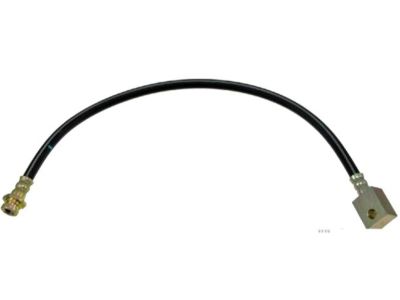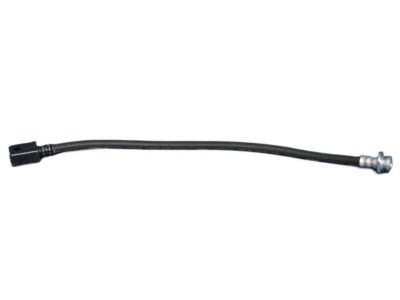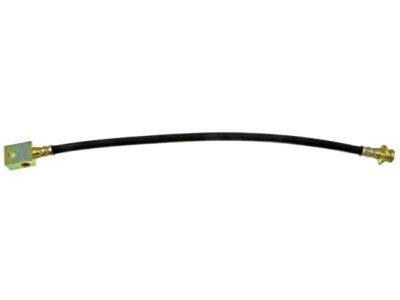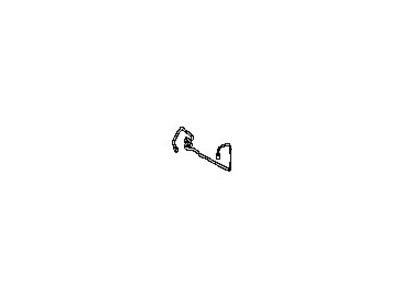×
- Live Chat
- 1-888-726-6993

My Garage
My Account
Cart
Genuine Nissan Xterra Brake Line
Brake Hose- Select Vehicle by Model
- Select Vehicle by VIN
Select Vehicle by Model
orMake
Model
Year
Select Vehicle by VIN
For the most accurate results, select vehicle by your VIN (Vehicle Identification Number).
34 Brake Lines found
Nissan Xterra Tube Assy-Brake,Front LH
Part Number: 46242-EA001$7.57 MSRP: $10.62You Save: $3.05 (29%)Nissan Xterra Tube Assembly-Rear Brake,R
Part Number: 46290-EA100$12.64 MSRP: $17.42You Save: $4.78 (28%)Ships in 1-3 Business DaysNissan Xterra Tube Assembly-Rear Brake,L
Part Number: 46310-EA000$7.19 MSRP: $9.90You Save: $2.71 (28%)Ships in 1-3 Business DaysNissan Xterra Tube Assembly - Brake, Front RH
Part Number: 46240-ZZ70A$23.76 MSRP: $35.04You Save: $11.28 (33%)Ships in 1-3 Business DaysNissan Xterra Hose Assembly-Brake Front
Part Number: 46210-EA00A$47.29 MSRP: $110.55You Save: $63.26 (58%)Ships in 1-3 Business DaysNissan Xterra Hose Assy-Brake
Part Number: 46210-1Z600$38.05 MSRP: $56.13You Save: $18.08 (33%)Ships in 1-3 Business DaysNissan Xterra Hose Assembly-Brake Front
Part Number: 46211-EA00A$48.50 MSRP: $111.67You Save: $63.17 (57%)Ships in 1-2 Business DaysNissan Xterra Tube Assembly-Rear Brake,R
Part Number: 46290-8B501$4.37 MSRP: $6.02You Save: $1.65 (28%)Nissan Xterra Tube Assembly-Rear Brake,L
Part Number: 46310-7B800$29.10 MSRP: $40.08You Save: $10.98 (28%)Ships in 1-3 Business DaysNissan Xterra Hose Assy-Brake
Part Number: 46210-ZL82A$42.73 MSRP: $63.02You Save: $20.29 (33%)Ships in 1-3 Business DaysNissan Xterra Hose Assy-Brake
Part Number: 46210-8B510$40.59 MSRP: $56.95You Save: $16.36 (29%)Ships in 1-3 Business DaysNissan Xterra Tube Assembly-Rear Brake,R
Part Number: 46290-1Z600$34.74 MSRP: $47.85You Save: $13.11 (28%)Ships in 1-3 Business DaysNissan Xterra Hose Assy-Brake
Part Number: 46210-EA300$42.73 MSRP: $63.02You Save: $20.29 (33%)Ships in 1-3 Business DaysNissan Xterra Tube Assy-Brake,Front RH
Part Number: 46240-ZS00A$23.76 MSRP: $35.04You Save: $11.28 (33%)Ships in 1-3 Business DaysNissan Xterra Hose Assy-Brake
Part Number: 46210-EA200$39.56 MSRP: $66.02You Save: $26.46 (41%)Ships in 1-2 Business DaysNissan Xterra Tube Assy-Brake,Front RH
Part Number: 46240-7Z300$107.77 MSRP: $148.45You Save: $40.68 (28%)Ships in 1-3 Business DaysNissan Xterra Tube Assembly - Brake, Front R
Part Number: 46240-EA00A$19.72 MSRP: $29.07You Save: $9.35 (33%)Ships in 1-3 Business DaysNissan Xterra Hose Assy-Brake
Part Number: 46210-ZL81A$39.56 MSRP: $66.02You Save: $26.46 (41%)Ships in 1-3 Business DaysNissan Xterra Hose Assy-Brake
Part Number: 46210-EA100$34.45 MSRP: $47.45Limited AvailabilityYou Save: $13.00 (28%)
| Page 1 of 2 |Next >
1-20 of 34 Results
Nissan Xterra Brake Line
The Nissan Xterra Brake Line is one of the vital system in the vehicle that transfer brake fluid from the master cylinder to the brake caliper pistons for proper working of the hydraulic braking system. Brake line is made from metal hence it is vulnerable to corrosion and impact forces that result in the leakage of the fluid and a resulting loss of pressure. Flex-lines however can also be damaged both externally and internally leading to poor brake performance. If replacement is required, get pre-bent brake line kits and direct replacement brake hoses which provide corrosion and good fitting to complete the job. Changing the brake hoses from the standard flexible rubber ones to steel braid hoses results in firmer and more sensitive brake pedal on performance driving.
If you need any OEM Nissan Xterra Brake Line, feel free to choose them out of our huge selection of genuine Nissan Xterra Brake Line. All our parts are offered at unbeatable prices and are supported by the manufacturer's warranty. In addition, we offer quick shipping to have your parts delivered to your door step in a matter of days.
Nissan Xterra Brake Line Parts Questions & Experts Answers
- Q: How to inspect, replace, and install flexible brake hoses and Brake Line on the Nissan Xterra?A: About every six months, with the vehicle raised and supported on jackstands, inspect the rubber hoses connecting the steel brake lines with the front and rear brake assemblies for cracks, chafing of the outer cover, leaks, blisters, and other damages. If a hose exhibits any of these conditions, replace it. To replace the front flexible brake hose, loosen the wheel lug nuts, raise the vehicle, and remove the wheel. At the bracket, unscrew the brake line fitting from the hose using a flare-nut wrench. Remove the U-clip from the female fitting at the bracket and pass the hose through it. On Pathfinder models, disconnect the hose from the strut bracket. At the caliper end, remove the inlet fitting bolt and separate the hose. Replace the two copper sealing washers. If working on a Pathfinder, route the hose through the bracket on the strut. Connect the fitting to the caliper with the inlet fitting bolt. Route the hose into the frame bracket, ensuring it isn't twisted, connect the brake line fitting, install the U-clip, and tighten the fitting. Bleed the caliper, install the wheel, lower the vehicle, and tighten the lug nuts. For the chassis-to-rear axle, raise the rear of the vehicle, block the front wheels, unscrew the brake line fitting from the hose at the chassis bracket, and remove the U-clip. At the axle end, unscrew the two brake line fittings, unscrew the bolt securing the fitting block to the axle housing, separate the lines from the fitting block, and remove the hose. To install, reverse the removal procedure and bleed both rear brakes. When replacing metal brake lines, use the correct parts. Avoid copper tubing. Steel brake lines can be purchased from dealers or auto parts stores. Prefabricated brake lines with flared tube ends and fittings can be bent to the proper shape using a tubing bender. After installation, ensure the new line is securely supported with adequate clearance from moving or hot components. Check the master cylinder fluid level, add fluid if necessary, bleed the brake system, and test the brakes before driving.



































